Key Takeaway
Embark on the ultimate Southern road trip from Charleston, South Carolina, and experience a captivating blend of coastal charm, historic plantations, scenic beauty, and cultural richness. This carefully planned itinerary highlights iconic locations, including the vibrant surf culture at Folly Beach, the timeless gardens of Middleton Place, and the historical significance of Boone Hall Plantation. Cross the majestic Ravenel Bridge into picturesque Mount Pleasant, explore military history on Sullivan’s Island, indulge in luxury on Kiawah Island, and find serenity on Edisto Island. Marvel at the ancient Angel Oak Tree and conclude your journey with Southern hospitality and charm in historic Summerville. Perfect for history buffs, nature lovers, foodies, and adventure seekers alike, this road trip encapsulates the essence of Southern exploration and hospitality.
Introduction to the Journey
Road trips have long captivated the hearts of travelers, offering an unparalleled opportunity to explore diverse landscapes, cultures, and culinary delights along the way. Starting from Charleston, South Carolina, adventurers can immerse themselves in the unique charm that this historic city has to offer before setting off on an unforgettable journey while staying at one of it’s beautiful Charleston Hotels. Renowned for its well-preserved architecture, vibrant art scene, and rich history, Charleston serves as an ideal launch point for those eager to discover the beauty of the Southern region.
The historic district of Charleston is a tapestry of cobblestone streets, antebellum mansions, and plantation homes. Visitors can spend days wandering through the city’s streets, soaking in its atmospheric squares and visiting iconic landmarks such as the Battery and Waterfront Park. This city is famed not only for its picturesque scenery but also for its commitment to Southern hospitality, creating a welcoming environment for both residents and visitors alike. Gastronomy enthusiasts will relish the opportunity to indulge in Lowcountry cuisine, featuring dishes that celebrate local ingredients and time-honored recipes.
As one sets out from Charleston, the journey promises a variety of scenic routes that transition from urban landscapes to serene countryside vistas. The drive along the coast reveals stunning ocean views and charming seaside towns, while inland routes lead through lush forests and sprawling plantations. Each stop along the way holds its own story and charm, allowing travelers to engage with the rich history of the South. Whether it’s visiting a historic site, enjoying the local flavors, or simply taking in the picturesque landscapes, a road trip from Charleston exemplifies the essence of Southern exploration.
Stop 1: Folly Beach
Folly Beach, situated a mere 12 miles from downtown Charleston, South Carolina, offers a captivating glimpse into the coastal beauty that the state is renowned for. Historically, Folly Beach played a significant role during the Civil War. This barrier island was strategically important due to its proximity to the Charleston Harbor, making it a site of military action and fortifications. The remnants of this rich history can still be felt today amidst the vibrant beach culture.
Visitors to Folly Beach are greeted with a picturesque landscape characterized by sandy shores, rolling waves, and lush marshlands. The beach is a favored spot for both tourists and locals, who flock here to engage in a plethora of activities. Sunbathing is a popular pastime, allowing visitors to unwind and soak up the warm South Carolina sun. For those seeking adventure, surfing and paddleboarding offer thrilling alternatives. The waves at Folly Beach provide an ideal environment for both novice and experienced surfers alike.
Moreover, Folly Beach boasts a diverse array of dining options, where one can savor fresh seafood while taking in stunning ocean views. Local restaurants serve delicious dishes, ranging from shrimp and grits to mouthwatering fish tacos, allowing visitors to indulge in the flavors of the region. As the sun sets, the ambiance becomes even more enchanting, making it a perfect location for a romantic dinner or a casual meal with family and friends.
In summary, Folly Beach is more than just a scenic stop on a road trip; it embodies the spirit of South Carolina’s coastal charm, providing a rich blend of history, recreation, and culinary delights. Whether you’re looking to relax on the beach, ride the waves, or enjoy a delightful meal, Folly Beach serves as an ideal beginning to your ultimate road trip adventure.
Photo Credits: Brian Stansberry
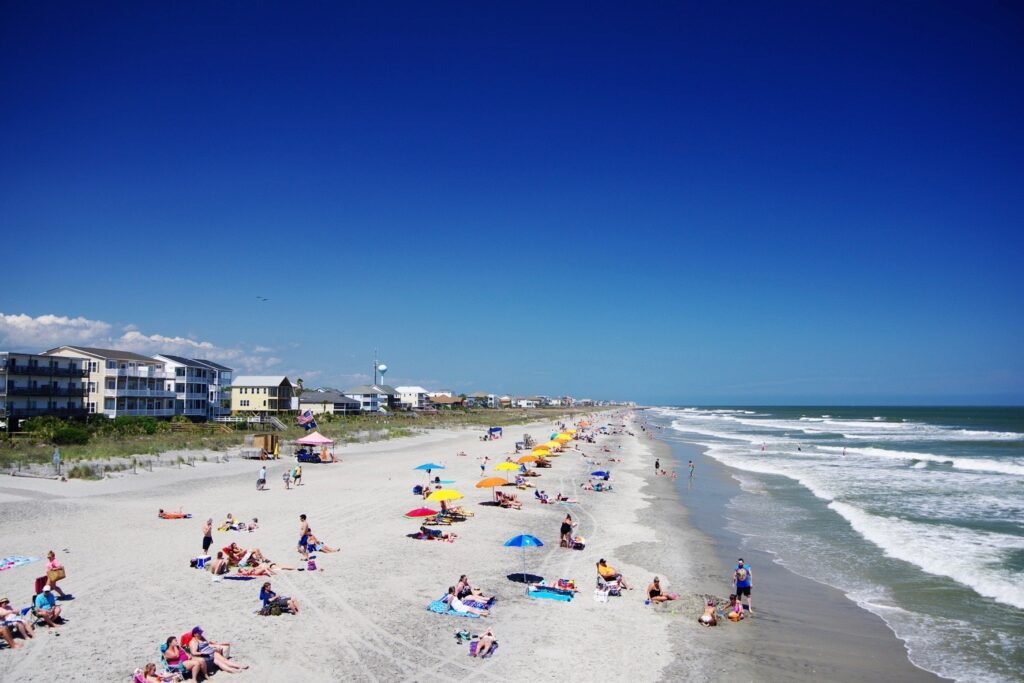
Stop 2: Middleton Place
Located approximately 17 miles west of downtown Charleston, Middleton Place stands as a testament to American history and horticultural beauty. This National Historic Landmark is renowned for being home to the oldest landscaped gardens in the United States. The plantation’s significance extends beyond its aesthetic appeal; it played a pivotal role during both the American Revolution and the Civil War, thus embedding it firmly within the narrative of American history.
The plantation was established in the late 17th century by the Middleton family, who were deeply involved in political and military affairs of the time. The estate not only served as a residence but also became a strategic site during the American Revolution, housing military leaders and serving as a backdrop for critical encounters. The family’s commitment to the agricultural prosperity of the region led to the development of extensive rice plantations, which were heavily reliant on enslaved labor, reflecting the complexities and contradictions of American history.
Visitors to Middleton Place are particularly enchanted by its gardens, which are designed in a neoclassical style. The meticulously arranged landscapes, blooming with azaleas, camellias, and magnolias, offer a serene glimpse into the 18th-century gardening practices. The combination of the scenic beauty and the rich history makes the gardens a perfect setting for reflection and learning. Furthermore, the grounds showcase the rich Gullah culture, including storytelling, crafts, and cooking, which provides insights into the lives of the enslaved individuals who contributed to the plantation’s history.
Middleton Place thus serves not just as a remarkable historical site but also as a vibrant celebration of the Gullah heritage and the era’s complex agricultural practices. Its gardens stand as living reminders of the past, offering a profound understanding of both beauty and adversity that shaped the region.
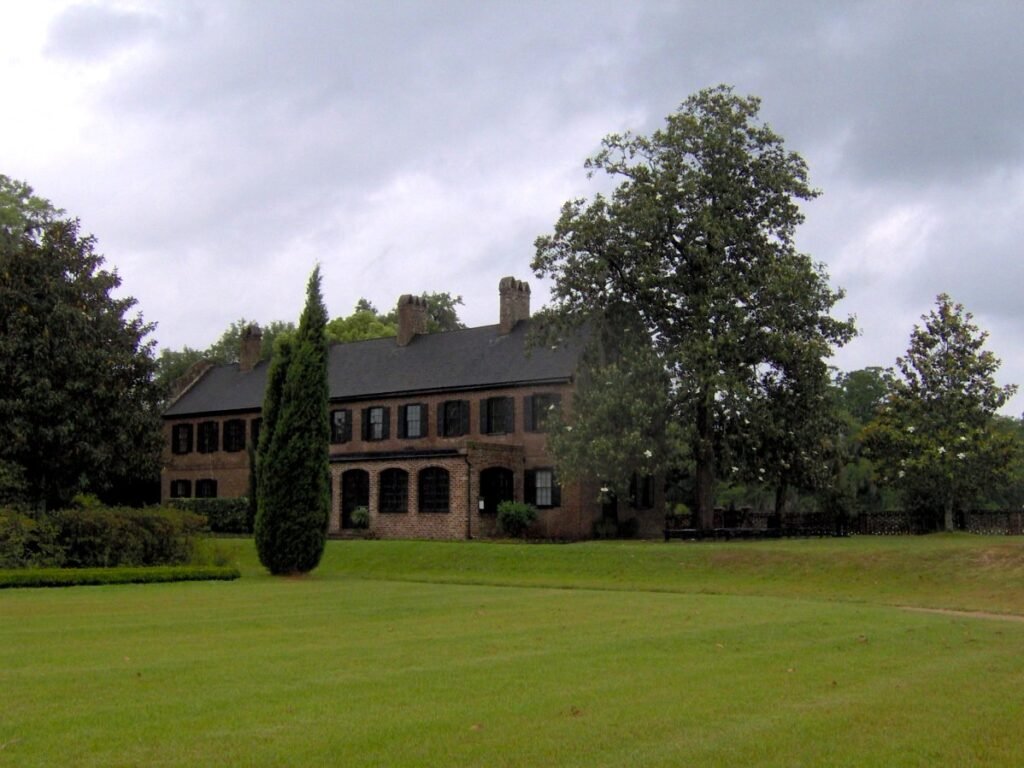
Stop 3: Boone Hall Plantation
Located a mere 15 miles from downtown Charleston, Boone Hall Plantation stands as one of the oldest continuously working plantations in America, boasting a rich history that dates back to the 17th century. Established in 1681, this historic site embodies the complexities of American history, from its agricultural roots to its cultural significance in the lives of both the plantation owners and the enslaved individuals who worked the land.
One of the plantation’s most iconic features is the renowned Avenue of Oaks, an impressive lane lined with sprawling live oak trees that date back more than 300 years. This breathtaking canopy not only serves as a picturesque pathway but also highlights the plantation’s commitment to preserving its natural and cultural heritage. As visitors stroll down this iconic avenue, they are transported back in time, allowing for a deeper connection to the plantation’s storied past.
In addition to the natural beauty, Boone Hall Plantation offers an insightful glimpse into the history of slavery in America through its preserved slave cabins. These cabins serve as poignant reminders of the lives lived within their walls and the enduring legacies they represent. Visitors can engage with knowledgeable guides who provide guided tours, offering narratives that shed light on the experiences of those who inhabited these spaces.
Apart from the plantation’s historical architecture and landscapes, Boone Hall also hosts various cultural events and reenactments, immersing visitors in the customs and traditions of the past. Guests have the opportunity to witness live demonstrations of historical techniques and participate in workshops that highlight the region’s agricultural practices. The combination of guided tours and these interactive elements creates an engaging experience that deepens one’s understanding of the cultural significance of Boone Hall Plantation.
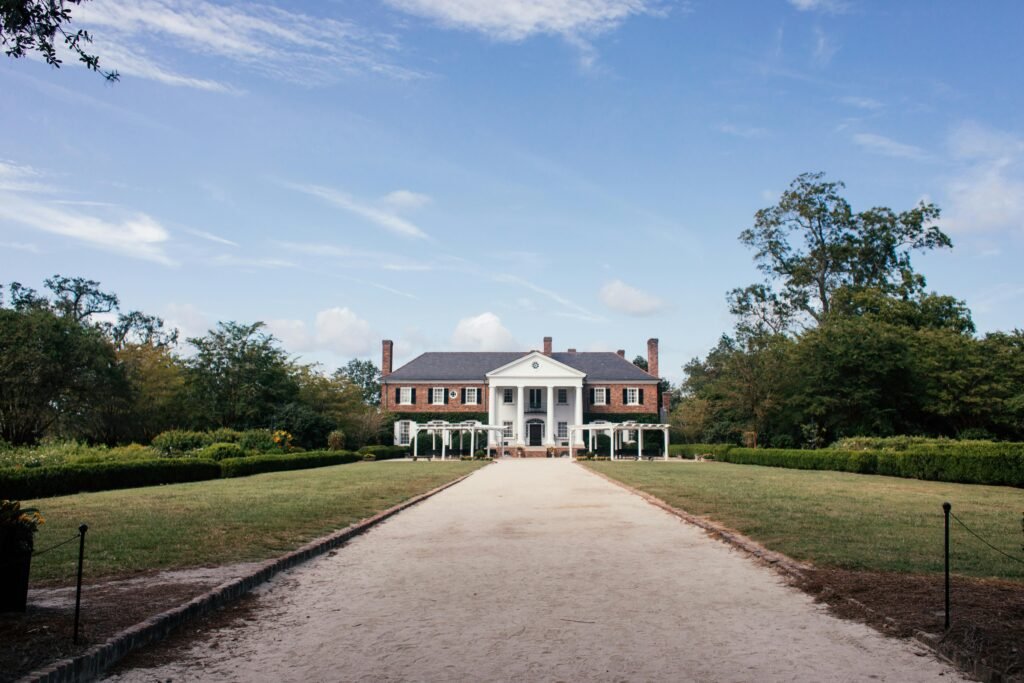
Stop 4: Mount Pleasant and the Ravenel Bridge
Approximately 10 miles from downtown Charleston, Mount Pleasant offers a unique blend of scenic beauty and urban sophistication, making it a notable stop on your road trip. The centerpiece of this picturesque area is the Arthur Ravenel Jr. Bridge, an architectural marvel that connects Mount Pleasant to Charleston across the Cooper River. Spanning 13,200 feet, the bridge is not only functional but also an iconic symbol of the region, showcasing a stunning design characterized by its sweeping cables and soaring towers. Opened in 2005, the bridge has quickly become a favorite among both locals and visitors, providing breathtaking views of the river and the Charleston skyline.
As you complete your journey across the Ravenel Bridge, the first stop in Mount Pleasant should be Waterfront Park. This waterfront area is a public space that allows visitors to relax while enjoying picturesque views of the harbor. The park is adorned with picnic areas and beautiful walkways, ideal for leisurely strolls or family outings. Along with the scenic vistas, the park features a variety of wildlife, adding to the park’s charm. Here, you will often see schools of fish and birds embellishing the waterfront landscape, which creates a tranquil atmosphere away from the bustling city life.
Another must-visit location in Mount Pleasant is Shem Creek, renowned for its vibrant dining scene and picturesque setting. Known for its waterfront restaurants, Shem Creek offers a splendid opportunity to enjoy local seafood while watching boats glide across the water. The creek is also celebrated for its rich diversity of wildlife, including dolphins and various bird species, making it an engaging spot for nature enthusiasts. Whether you are savoring freshly caught shrimp or embarking on a kayaking adventure, Mount Pleasant promises an unforgettable experience enriched by its stunning natural surroundings and local culture.
Photo Credits:B. Childress, Lee Keadle
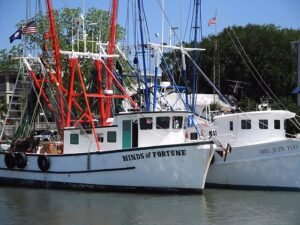
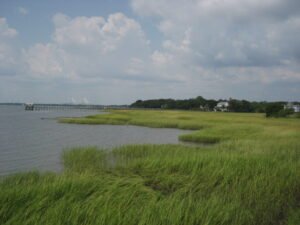
Stop 5: Sullivan’s Island
Nestled approximately 12 miles from downtown Charleston, Sullivan’s Island emerges as a captivating destination, blending natural beauty with profound historical significance. This picturesque island is well-regarded for its pristine beaches and tranquil environment, making it an ideal location for visitors seeking both relaxation and exploration. Sullivan’s Island is perhaps most notably recognized for its role as a former military outpost, particularly with the presence of Fort Moultrie. Established in 1776, this fortification played a crucial role in the defense of Charleston during the Revolutionary War, and it continues to serve as a testament to the island’s rich military history.
Beyond its historical landmarks, Sullivan’s Island also boasts charming residential areas that reflect the essence of coastal living. The quaint streets are lined with beautiful homes, many of which retain their original architectural features, contributing to the island’s unique character. These neighborhoods underscore the island’s commitment to preservation, ensuring that the charm of Sullivan’s Island remains intact while providing a serene atmosphere for both residents and visitors. The community here places significant value on maintaining the island’s heritage, which is evident in their enthusiastic support for local initiatives aimed at environmental conservation and historic preservation.
When visiting Sullivan’s Island, outdoor enthusiasts can take advantage of the scenic beaches which offer a peaceful retreat from the hustle and bustle of city life. Whether engaging in leisurely walks along the shore, enjoying a picnic with family, or immersing oneself in the local history provided by Fort Moultrie, there is no shortage of activities that cater to a variety of interests. Thus, Sullivan’s Island stands out not only for its natural beauty but also for its rich legacy, making it a noteworthy stop on the ultimate 10-stop road trip from Charleston, South Carolina.
Stop 6: Kiawah Island
Located approximately 25 miles from downtown Charleston, Kiawah Island stands as one of South Carolina’s premier destinations, renowned for its breathtaking natural beauty and luxurious amenities. This barrier island, characterized by its pristine beaches, provides a tranquil escape for visitors seeking leisure and recreation. Kiawah Island is home to several luxury resorts, each offering stunning views of the Atlantic Ocean and easy access to the island’s natural attractions.
The island’s impressive landscape is a tapestry of scenic marshes, dense maritime forests, and tidal creeks, all teeming with diverse wildlife. Nature enthusiasts will find themselves enchanted by the sight of alligators basking in the sun and the sounds of various bird species inhabiting the wetlands. These ecosystems not only support local wildlife but also provide ample opportunities for outdoor activities such as kayaking, paddleboarding, and fishing amidst the serene surroundings. Nature trails and bike paths weave through the island, allowing visitors to traverse its beautiful terrain while enjoying the fresh coastal air.
Kiawah Island also boasts several top-rated golf courses designed by legendary players, providing challenging yet rewarding experiences for golf enthusiasts. The two-time U.S. Open host, the Ocean Course, is a particular highlight, capturing the essence of the island’s coastal landscape while testing players’ skills with its undulating fairways and oceanfront greens.
A rich history underpins Kiawah Island, tracing back to Indigenous peoples who originally inhabited the region, followed by European settlers who recognized the area’s allure. This historical depth adds cultural significance to visits, as one can reflect on the island’s evolution while immersing themselves in its stunning vistas. Each aspect of Kiawah Island invites visitors to appreciate both its natural beauty and its storied past, making it an essential stop on your ultimate road trip from Charleston.
Stop 7: Edisto Island
Edisto Island, located approximately 45 miles from downtown Charleston, offers a uniquely tranquil atmosphere, making it an ideal stop on your ultimate road trip. Unlike other tourist hotspots, Edisto Island is characterized by its serene environment, ensuring a peaceful retreat for visitors looking to escape the hustle and bustle of busy city life. This beautiful island not only captivates with its scenic vistas but also boasts a rich environmental diversity, which is evident in its marshlands, beaches, and thriving ecosystems.
The island’s commitment to eco-tourism is apparent through various initiatives that promote sustainable practices and biodiversity. Visitors have the opportunity to explore the natural beauty by engaging in activities such as kayaking through the waterways or hiking along trails that showcase the native flora and fauna. This dedication to preserving the environment allows travelers to experience the island’s unique wildlife, including birds, dolphins, and other marine life.
Rich in history, Edisto Island is home to several historical sites, with the Edisto Island Museum serving as a focal point for those interested in the island’s cultural heritage. The museum offers insights into the community’s agricultural practices and history, illustrating how the island’s inhabitants have adapted over the years. Engaging with friendly local farmers can provide valuable lessons about sustainable agriculture and the importance of preserving local traditions.
For the fishing enthusiasts, Edisto Island provides ample opportunities for both saltwater and freshwater fishing. Whether casting a line from the shore or venturing out into deeper waters, anglers are likely to find a rewarding experience. Various fishing charters and guides are available for visitors wanting to make the most of their fishing excursions.
Stop 8: The Angel Oak Tree
Situated on Johns Island, approximately 25 miles from downtown Charleston, the Angel Oak Tree is a renowned natural icon and one of the oldest living things in the United States. This majestic live oak (Quercus virginiana) is estimated to be between 400 and 500 years old, making it a significant historical and ecological treasure. Towering at a height of 65 feet, with a canopy that provides an impressive shade covering of over 89 feet in diameter, the Angel Oak Tree captivates visitors with its grandeur and age.
This ancient tree does more than merely stand as a picturesque natural feature; it is also steeped in folklore and myth. Local legends tell tales of the spirits of former slaves or early settlers who can still be seen amidst the branches, captivating the imaginations of those who visit. These stories enhance the tree’s allure and promote a deeper appreciation for its historical backdrop. The tree serves as a reminder of the connection between nature and the human experience, highlighting the profound cultural heritage of the area.
Efforts to conserve the Angel Oak Tree and its surrounding environment have been a priority for local organizations and authorities. The preservation initiatives not only focus on the tree itself but also encompass the entire Angel Oak Park, which provides educational opportunities for visitors to learn about the importance of ecological preservation. The park features walking trails and informational signage that details the significance of the live oak ecosystem. Visitors can enjoy leisurely strolls, with the opportunity to engage in educational programs designed to nurture a deeper understanding of this remarkable natural wonder.
Stop 9: Historic Summerville
Approximately 24 miles from downtown Charleston lies the picturesque town of Summerville, a destination steeped in history and Southern charm. This quaint town is often referred to as ‘The Birthplace of Sweet Tea,’ a title that underscores its deep-rooted connection to Southern culture. In the 19th century, Summerville emerged as a prominent resort town, attracting visitors seeking respite from the heat of the coastal regions. The town’s enviable position, nestled amid verdant landscapes, made it an ideal getaway, where visitors could enjoy the refreshing breezes and natural beauty.
The rich history of Summerville is still evident in its historic district, where one can wander along tree-lined streets adorned with well-preserved antebellum architecture. The area boasts numerous local shops and boutiques, featuring unique artisan goods, antiques, and other locally made products. Visitors will find that the charm of these establishments contributes significantly to the overall allure of the town, allowing for shopping experiences that are both memorable and culturally enriching.
In addition to shopping, Summerville offers a variety of dining options that reflect its Southern heritage. Local restaurants pride themselves on serving traditional dishes, including sweet tea, of course, alongside other regional favorites. These establishments emphasize the use of fresh ingredients sourced from local farmers, enhancing the authenticity of their culinary offerings.
The town also hosts several annual festivals, which draw locals and visitors alike to celebrate Summerville’s vibrant culture and community spirit. Events like the Flowertown Festival showcase the town’s stunning azalea gardens, transforming the area into a colorful spectacle each spring. These seasonal attractions provide an excellent opportunity to experience Summerville’s unique character while enjoying the beauty of its natural surroundings. Overall, a visit to Historic Summerville promises to enrich any road trip anchored in the rich tapestry of Southern heritage.
Conclusion and Travel Tips
Embarking on a road trip from Charleston, South Carolina, is an exhilarating way to explore the rich history and stunning landscapes of the Lowcountry. This ten-stop journey immerses travelers in the unique cultural offerings found along the route, each destination providing its own charm and stories. From the historic streets of Charleston to the tranquil beaches of the Outer Banks, this expedition showcases the diverse beauty of the region. Embrace the adventure and take the time to appreciate the attractions each stop has to offer, allowing yourself to connect with the local culture and environment.
As you prepare for your road trip, it is essential to consider the best times to travel. Spring and fall are ideal, as the weather remains pleasant and the crowds are manageable. Furthermore, planning your journey during weekdays can help avoid peak traffic times, making for a smoother drive. When packing for your trip, ensure that you bring comfortable clothing, sunscreen, and plenty of snacks to keep everyone energized along the way.
Another vital aspect of your road trip is to maintain a leisurely pace. The allure of the journey lies as much in the travel itself as in the destinations. Allow for spontaneous stops at local eateries, markets, or scenic overlooks to enrich your experience. For those traveling with family or friends, sharing the driving responsibilities can make long stretches more enjoyable. Lastly, maintain flexibility in your schedule; this approach allows you to explore unexpected attractions that may capture your interest. Every moment on the road contributes to the journey, creating lasting memories and deepening your appreciation for the beautiful Lowcountry.








